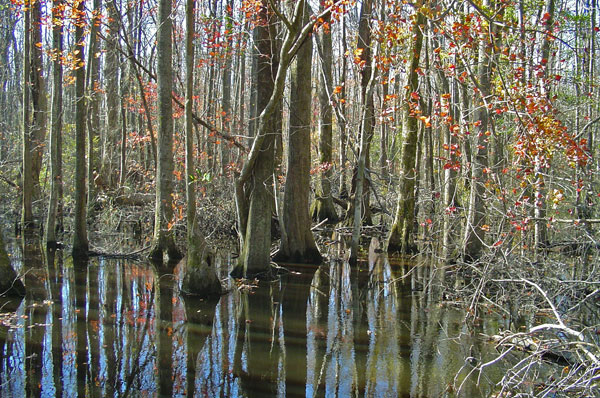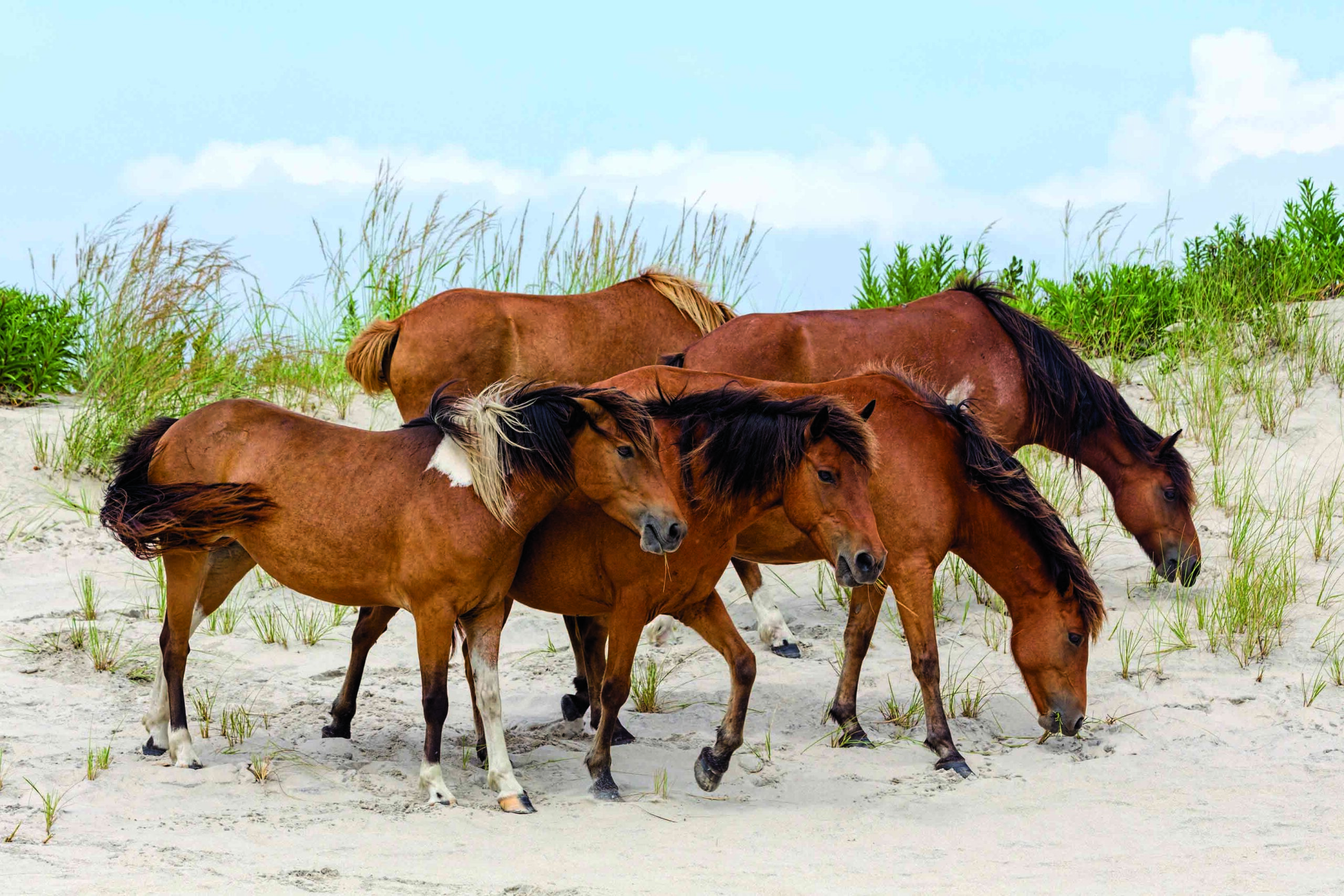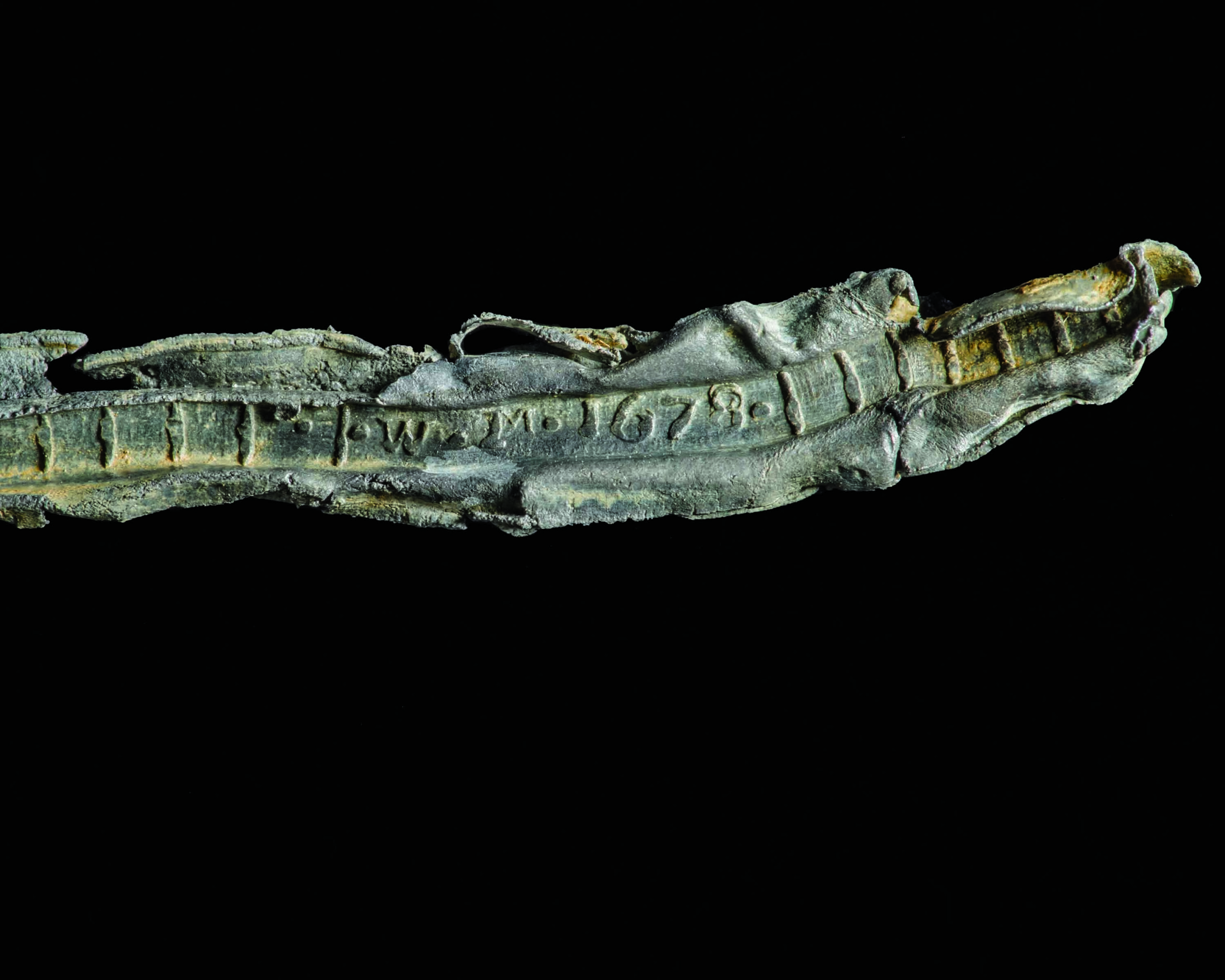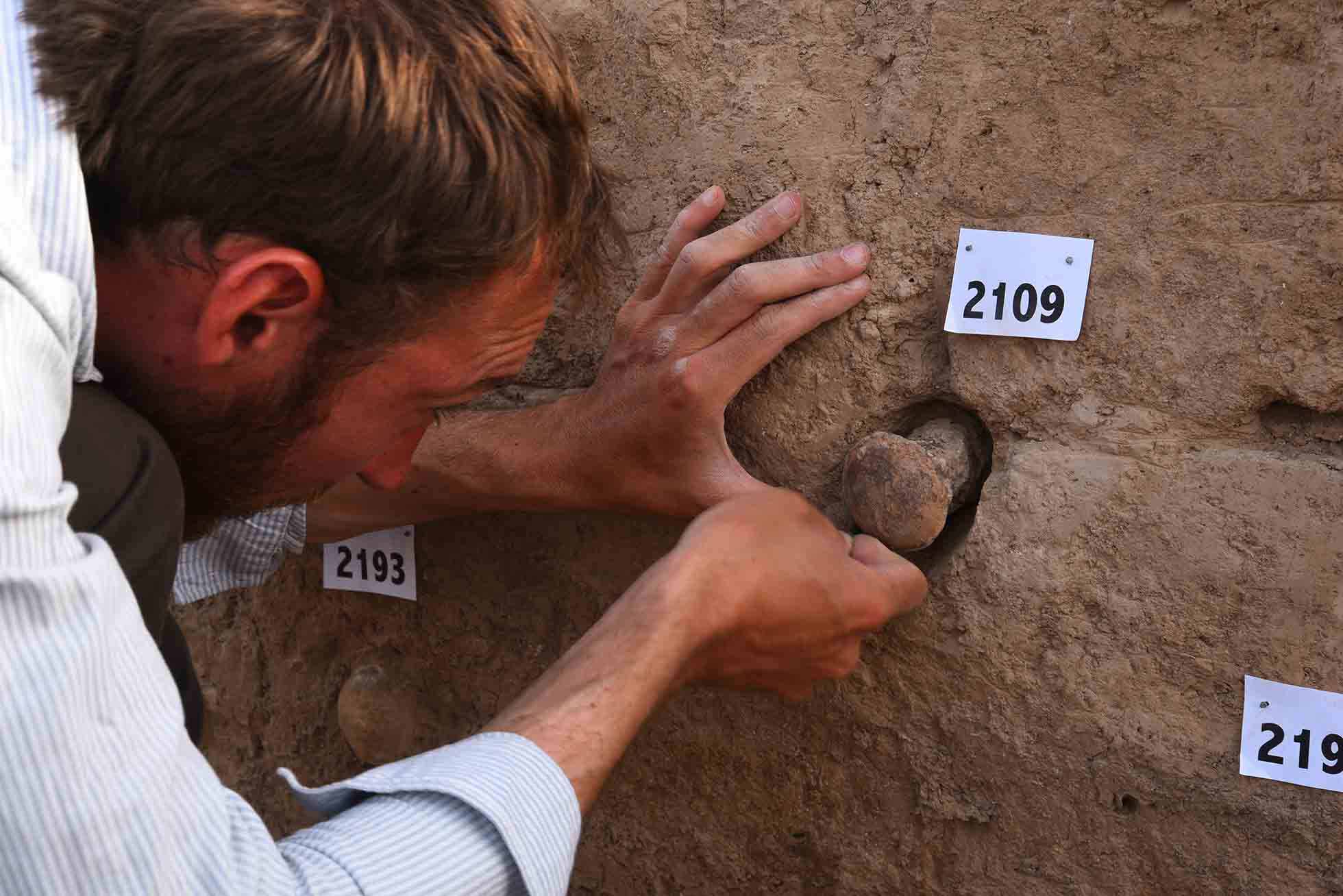
WILLIAMSBURG, VIRGINIA—The Virginia Gazette reports that archaeologists led by Jack Gary of Colonial Williamsburg are investigating pastureland where the eighteenth-century home of John Custis IV once stood. Enslaved Africans are also known to have lived on the property, called Custis Square, and tended its house and elaborate gardens. The foundations of the house were uncovered in the 1960s. Now Gary and his team members want to find out how the landscaping, thought to feature topiary, gravel paths, statues, and plants imported from England, was laid out. Pollen analysis could confirm what sort of plants and herbs Custis grew for the medicines he blended as an amateur physician. The researchers will also look for outbuildings where enslaved people are thought to have lived and worked. Martha Washington may have resided on the property as well, since she inherited Custis Square from her first husband, Daniel Parke Custis, who died in 1757. She went on to marry George Washington in 1759. To read about the use of 3-D printing in investigating a Virginia plantation, go to “Fairfield's Rebirth in 3-D.”








